Stories from the Field: What Started the Sesotunawa Learning Journey
"Tong may naga bakal na sa amon ginahimo, kung ano ipahimo nila, amo lang man to himuon namon. Ang amon customer ang maghambal kung ano ang himuon, kis-a tagaan kami nila sang drawing nga amon sundun. Wala na kami naga isip sang design namon kay hindi man namon bal-an kung namian sila o may mag bakal. Hindi man namon gusto malugi. Gina isip man namon na maka income man kami para sa amon pamilya." – Joel Blunto
(We used to only make products that were marketable. Customers would only tell us what to create or show us design sketches to execute. We did not think of our own designs because we were not sure if people would like or buy it. Our priority was always to earn for our family.)
Before we started Sesotunawa, I had the privilege of working with different Tboli culture masters in creating a culture-based curriculum for the Tboli Senior High School of Lake Sebu. From this experience, I have heard so many stories of how Tboli children learned different art traditions by working alongside their parents.
Kuya Joel, for example, started learning the art of Temwel when he was still 6 years old. He remembered playing in the Gono Lumubon (temwel workshop), learning how to roll wax, and form different shapes from it, which are later used as metek or designs in their brass cast product. He also recalled assisting his Ye (mother) in keeping the fires of the lubon ablaze during the melting process.
“Amo kami sina mag tuon, sir. Gatan-aw kami. Ga intra kami sa trabaho.” (That's how we learn. We observe and participate in the process of making.) Kuya Joel shared this with pride. He also shared the different design elements that he has learned, and his family has been creating for as far he could remember. Pointing into one of his newly crafted bells, he introduced and told me the story behind the bluko, linulid, tnufi, hekut, and other symbols that they use in their design process.

Out of curiosity, I asked Kuya Joel why they have not created new products or designs. His answer revealed so much about the Tau Temwel's current realities as indigenous artists.
"Tong may naga bakal na sa amon ginahimo, kung ano ipahimo nila, amo lang man to himuon namon. Ang amon customer ang maghambal kung ano ang himuon, kis-a tagaan kami nila sang drawing nga amon sundun. Wala na kami naga isip sang design namon kay hindi man namon bal-an kung namian sila o may mag bakal. Hindi man namon gusto malugi. Gina isip man namon na maka income man kami para sa amon pamilya."
(“We used to only make products that were marketable. Customers would only tell us what to create or show us design sketches to execute. We did not think of our own designs because we were not sure if people would like or buy it. Our priority was always to earn for our family.”)
This was the insight that inspired our Sesotunawa journey. In 2017, we co-founded the Sesotunawa brand to provide opportunities for our partner Tboli artists to rediscover the wealth of their cultural resources and enrich their knowledge and practice, not only in their art tradition but also in their capability to interact with the market.
Our mentoring sessions and capability-building activities are grounded on the Tboli knowledge and learning systems. As a brand, we believe that the best way to ensure that our partner artists become self-reliant artist-entrepreneurs is to provide them a safe space to make use of the knowledge that they already have and learn new skills in the way that they already know.
--
Words by Karl Lozano
Photos by Sesotunawa


Leave a comment
Please note, comments must be approved before they are published